UKF-Based Observer Design for the Electric Brake Booster in Situations of Disturbance
Abstract
1. Introduction
2. Modeling
2.1. Electro-Hydraulic Coupling Model
2.2. Reaction Disk Model
2.3. Pre-Compression Strategy Based on the Leverage Model
3. Closed-Loop Observation Algorithm Design
3.1. RLS p-V Characteristic Estimator
3.2. Linearization
3.3. Design of the Controller
3.4. Unscented Kalman Filtering
- Step 1: State and measurement are predicted based on state-space through two Unscented Transformation (UT) [29]. The Sigma point set can be used to predict state and covariance:where n is the dimension of state vector. is the Sigma point set. and are the weighting factor aggregate of Sigma points and covariance, and the number of elements in the set is . is the covariance matrix of state-space updating error. Then, measurement’s prediction is then acquired by a second UT transform aimed at state’s prediction:where is the Sigma point set of ;
- Step 2: The internal covariance of the measurement and the cross-variance between measurement and state can be calculated bywhere R is the covariance matrix of measurement error;
- Step 3–5: After the procedure of forecasting, the Kalman gain, the observer’s state, and covariance matrix are updated:
4. Observation Results of Simulation and Vehicle Test
4.1. Simulation Results
4.2. Vehicle Test Results
5. Conclusions
Supplementary Materials
Author Contributions
Funding
Data Availability Statement
Conflicts of Interest
Abbreviations
| E-Booster | Electric brake booster |
| UKF | Unscented Kalman Filter |
| EKF | Extended Kalman Filter |
| KF | Kalman Filter |
| LQR | Linear quadratic regulator |
| RLS | Recursive least squares |
| PMSM | Permanent magnet synchronous motor |
| GM | Generalized Maxwell |
| UT | Unscented Transformation |
| RMSE | Root mean square errors |
| MPC | Model Predictive Control |
| SUV | Sport Utility Vehicle |
References
- Todeschini, F.; Corno, M.; Panzani, G.; Fiorenti, S.; Savaresi, S.M. Adaptive cascade control of a brake-by-wire actuator for sport motorcycles. IEEE/ASME Trans. Mechatron. 2014, 20, 1310–1319. [Google Scholar] [CrossRef]
- Todeschini, F.; Formentin, S.; Panzani, G.; Corno, M.; Savaresi, S.M.; Zaccarian, L. Nonlinear pressure control for bbw systems via dead-zone and antiwindup compensation. IEEE Trans. Control. Syst. Technol. 2015, 24, 1419–1431. [Google Scholar] [CrossRef]
- Oshima, T.; Fujiki, N.; Nakao, S.; Kimura, T.; Ohtani, Y.; Ueno, K. Development of an electrically driven intelligent brake system. SAE Int. J. Passeng. Cars-Mech. Syst. 2011, 4, 399–405. [Google Scholar] [CrossRef]
- Xiong, L.; Yuan, B.; Guang, X.; Xu, S. Analysis and Design of Dual-Motor Electro-Hydraulic Brake System; SAE Technical Paper; SAE International: Warrendale, PA, USA, 2014. [Google Scholar]
- Park, S.; Oh, K.; Jeong, Y.; Yi, K. Model predictive control-based fault detection and reconstruction algorithm for longitudinal control of autonomous driving vehicle using multi-sliding mode observer. Microsyst. Technol. 2020, 26, 239–264. [Google Scholar] [CrossRef]
- Hu, C.; Wei, X.; Ren, Y. Passive fault-tolerant control based on weighted lpv tube-mpc for air-breathing hypersonic vehicles. Int. J. Control. Autom. Syst. 2019, 17, 1957–1970. [Google Scholar] [CrossRef]
- Dai, Y.; Yu, S.; Yan, Y.; Yu, X. An ekf-based fast tube mpc scheme for moving target tracking of a redundant underwater vehicle-manipulator system. IEEE/ASME Trans. Mechatron. 2019, 24, 2803–2814. [Google Scholar] [CrossRef]
- Campos-Delgado, D.U.; Espinoza-Trejo, D.R. An observer-based diagnosis scheme for single and simultaneous open-switch faults in induction motor drives. IEEE Trans. Ind. Electron. 2011, 58, 671–679. [Google Scholar] [CrossRef]
- Diao, S.; Diallo, D.; Laboure, E. A nonlinear observer for dc bus voltage estimation and sensor diagnosis for a battery charger used in automotive systems. In Proceedings of the 2015 IEEE 24th International Symposium on Industrial Electronics (ISIE), Buzios, Brazil, 3–5 June 2015; pp. 438–443. [Google Scholar]
- Eng, Y.H.; Teo, K.M.; Chitre, M.; Ng, K.M. Online system identification of an autonomous underwater vehicle via in-field experiments. IEEE J. Ocean. Eng. 2016, 41, 5–17. [Google Scholar] [CrossRef]
- Karras, G.C.; Panos, M.; Bechlioulis, C.P.; Kyriakopoulos, K.J. Unsupervised online system identification for underwater robotic vehicles. IEEE J. Ocean. Eng. 2018, 44, 642–663. [Google Scholar] [CrossRef]
- Ercan, Z.; Carvalho, A.; Gokasan, M.; Borrelli, F. Modeling, identification, and predictive control of a driver steering assistance system. IEEE Trans. Hum. Mach. Syst. 2017, 47, 700–710. [Google Scholar] [CrossRef]
- Cui, Z.; Cui, N.; Wang, C.; Li, C.; Zhang, C. A robust online parameter identification method for lithium-ion battery model under asynchronous sampling and noise interference. IEEE Trans. Ind. Electron. 2020, 68, 9550–9560. [Google Scholar] [CrossRef]
- Mahyuddin, M.N.; Na, J.; Herrmann, G.; Ren, X. Adaptive observer-based parameter estimation with application to road gradient and vehicle mass estimation. IEEE Trans. Ind. Electron. 2013, 61, 2851–2863. [Google Scholar] [CrossRef]
- Nam, K.; Oh, S.; Fujimoto, H.; Hori, Y. Estimation of sideslip and roll angles of electric vehicles using lateral tire force sensors through rls and kalman filter approaches. IEEE Trans. Ind. Electron. 2013, 60, 988–1000. [Google Scholar] [CrossRef]
- Zhou, H.; Liu, Z.; Yang, X. Motor torque fault diagnosis for four wheel independent motor-drive vehicle based on unscented kalman filter. IEEE Trans. Veh. Technol. 2018, 67, 1969–1976. [Google Scholar] [CrossRef]
- Lee, S.; Nakano, K.; Ohori, M. On-board identification of tyre cornering stiffness using dual kalman filter and gps. Veh. Syst. Dyn. 2015, 53, 437–448. [Google Scholar] [CrossRef]
- Boada, B.L.; Garcia-Pozuelo, D.; Boada, M.; Diaz, V. A constrained dual kalman filter based on pdf truncation for estimation of vehicle parameters and road bank angle: Analysis and experimental validation. IEEE Trans. Intell. Transp. Syst. 2017, 18, 1006–1016. [Google Scholar] [CrossRef]
- Calabrese, A.; Strano, S.; Terzo, M. Adaptive constrained unscented kalman filtering for real-time nonlinear structural system identification. Struct. Control. Health Monit. 2017, 25, e2084. [Google Scholar] [CrossRef]
- Jun, H. Modelling and Control of Vehicle Braking System Equipped with Electro-Mechanical Booster. Master’s Thesis, Jilin University, Changchun, China, 2018. [Google Scholar]
- Lu, L.Y.; Lin, G.L.; Shih, M.H. An experimental study on a generalized maxwell model for nonlinear viscoelastic dampers used in seismic isolation. Eng. Struct. 2013, 34, 111–123. [Google Scholar] [CrossRef]
- Berg, M. A nonlinear rubber spring model for rail vehicle dynamics analysis. Veh. Syst. Dyn. 1998, 30, 197–212. [Google Scholar] [CrossRef]
- Karlsson, F.; Persson, A. Modelling Non-Linear Dynamics of Rubber Bushings-Parameter Identification and Validation. Master’s Thesis, Lund University, Lund, Sweden, 2003. [Google Scholar]
- Berg, M. A model for rubber springs in the dynamic analysis of rail vehicles. Proc. Inst. Mech. Eng. Part F J. Rail Rapid Transit 1997, 211, 95–108. [Google Scholar] [CrossRef]
- Vollert, H.; Kneip, F.; Mahnkopf, D. Method for Operating a Brake-Boosted Brake System of a Vehicle, and Control Device for a Brake-Boosted Brake System of a Vehicle. U.S. Patent No. 8,886,430, 11 November 2014. [Google Scholar]
- Mahnkopf, D. Brake Booster and Method for Operating a Brake Booster. U.S. Patent 9,845,086, 19 December 2017. [Google Scholar]
- Coleman, T.F.; Li, Y. An interior trust region approach for nonlinear minimization subject to bounds. Siam J. Optim. 1993, 6, 418–445. [Google Scholar] [CrossRef]
- Mariani, S.; Ghisi, A. Unscented kalman filtering for nonlinear structural dynamics. Nonlinear Dyn. 2007, 49, 131–150. [Google Scholar] [CrossRef]
- Julier, S.; Uhlmann, J.; Durrant-Whyte, H.F. A new method for the nonlinear transformation of means and covariances in filters and estimators. IEEE Trans. Autom. Control. 2001, 45, 477–482. [Google Scholar] [CrossRef]
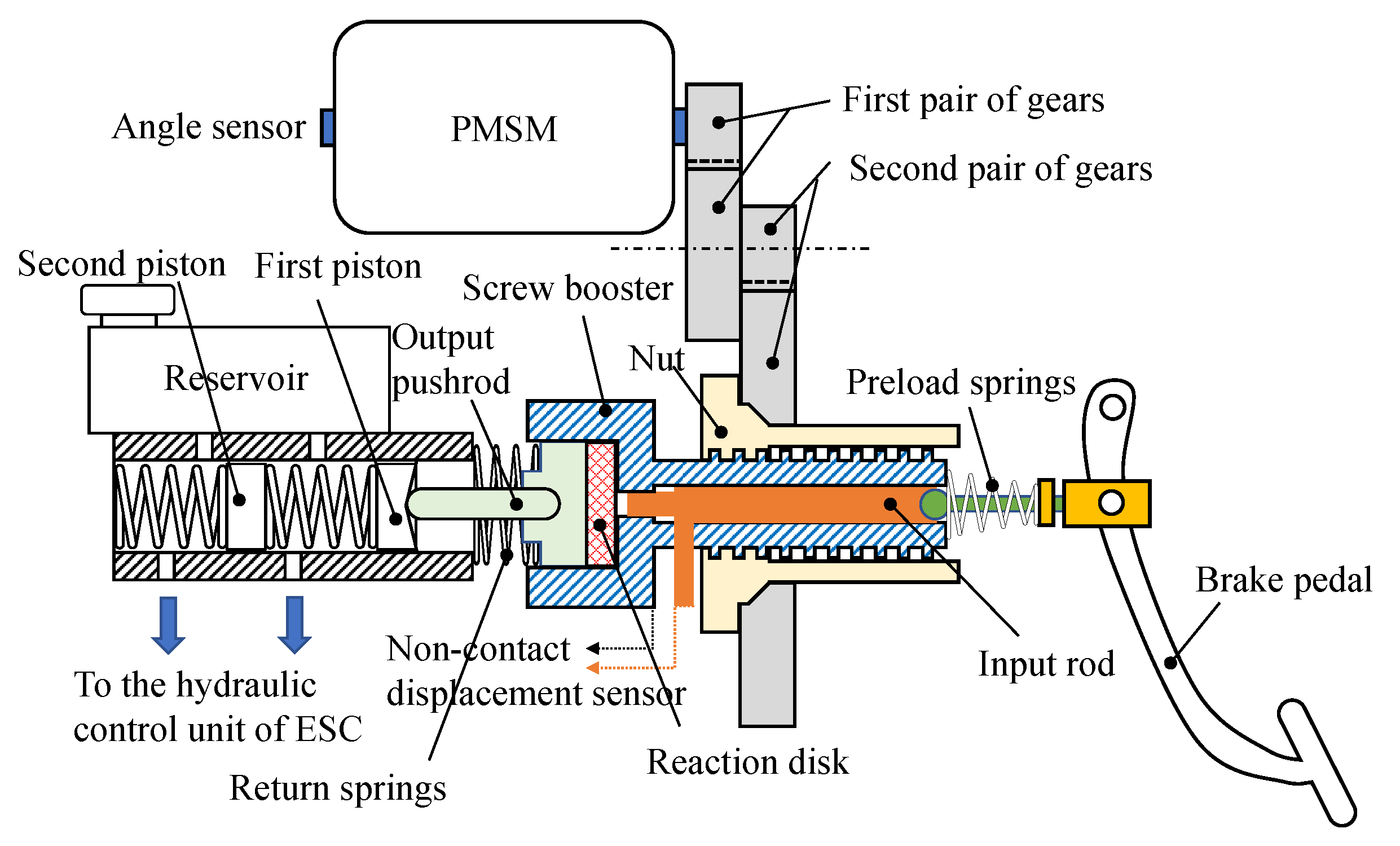
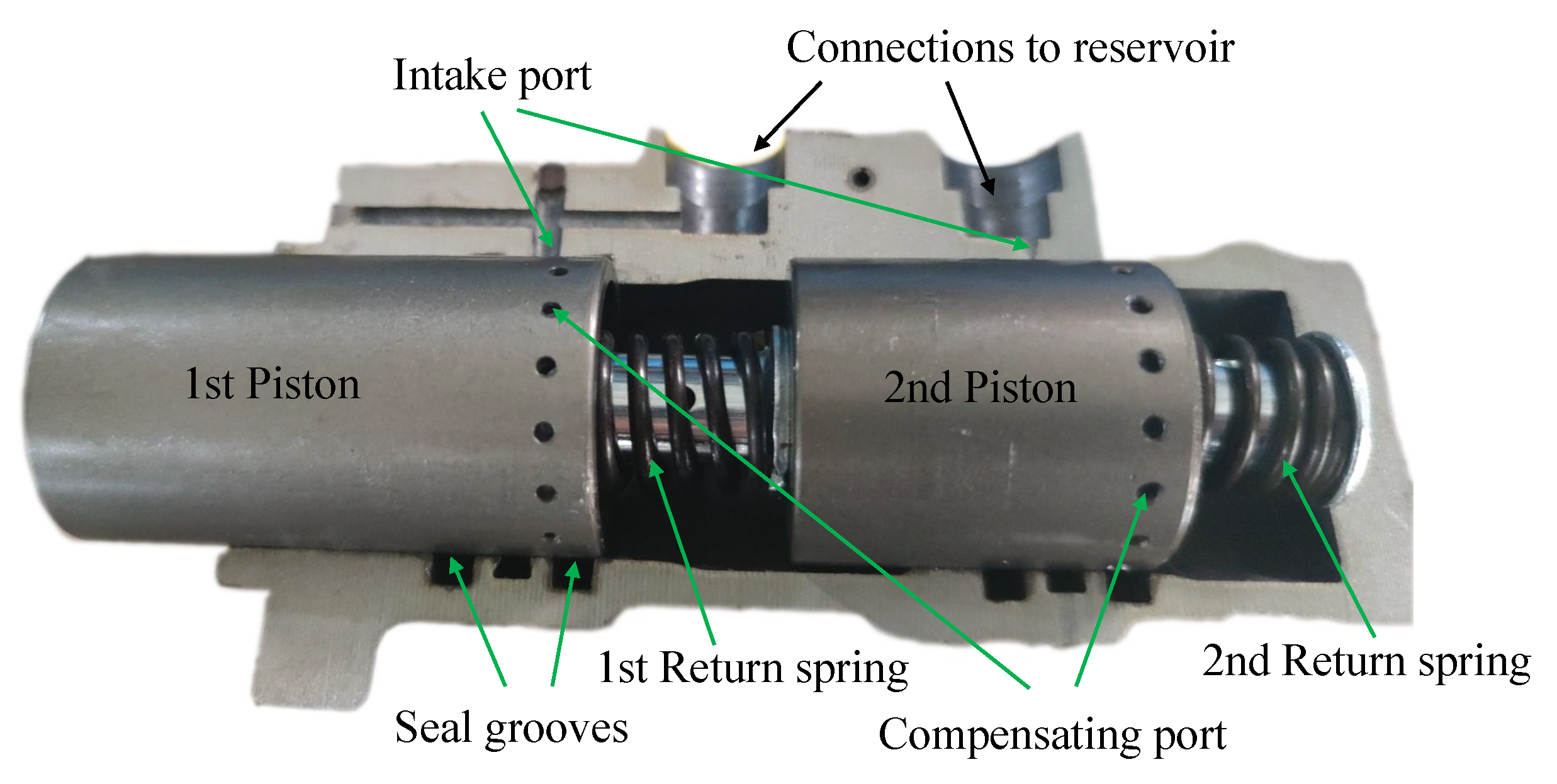

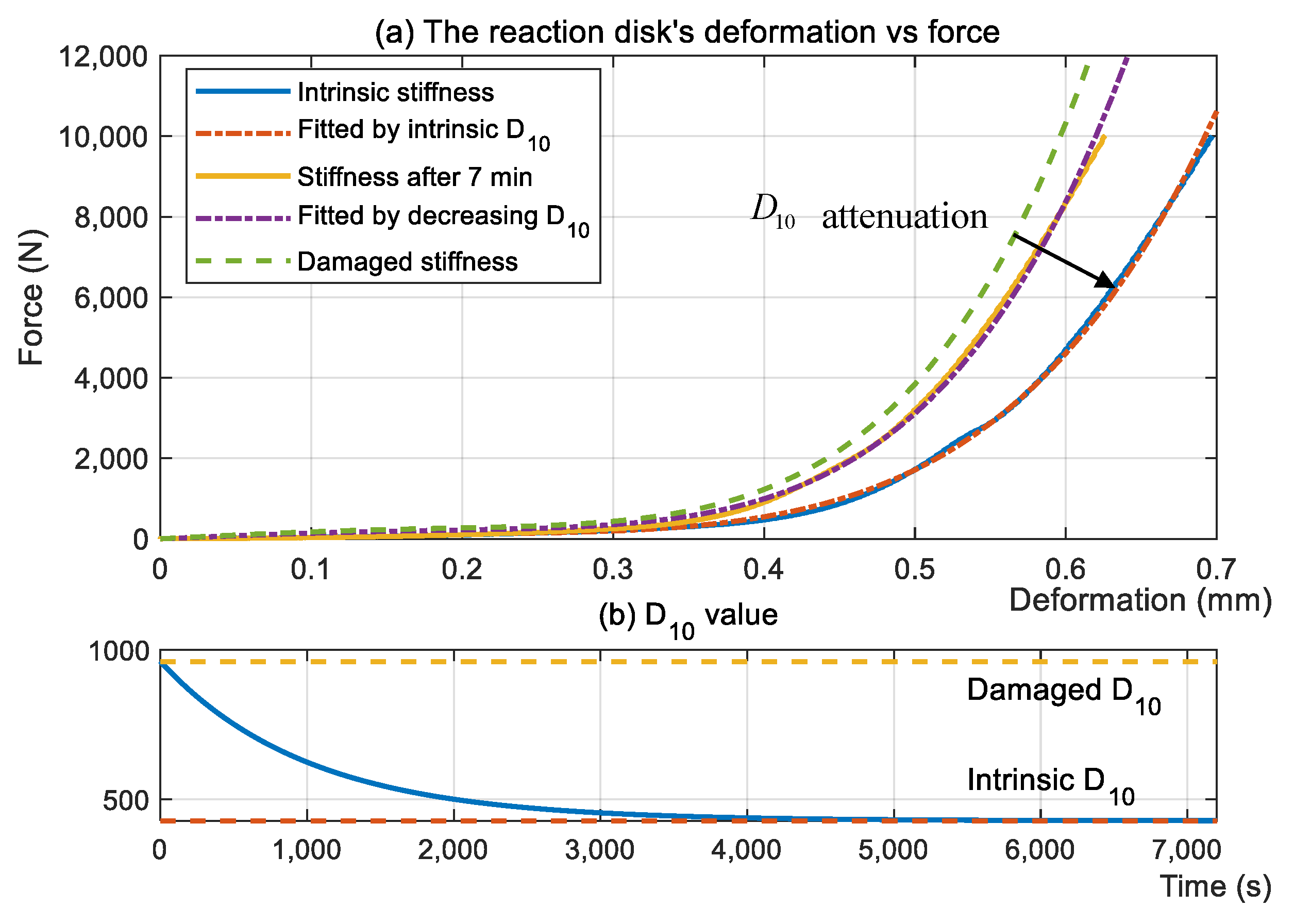
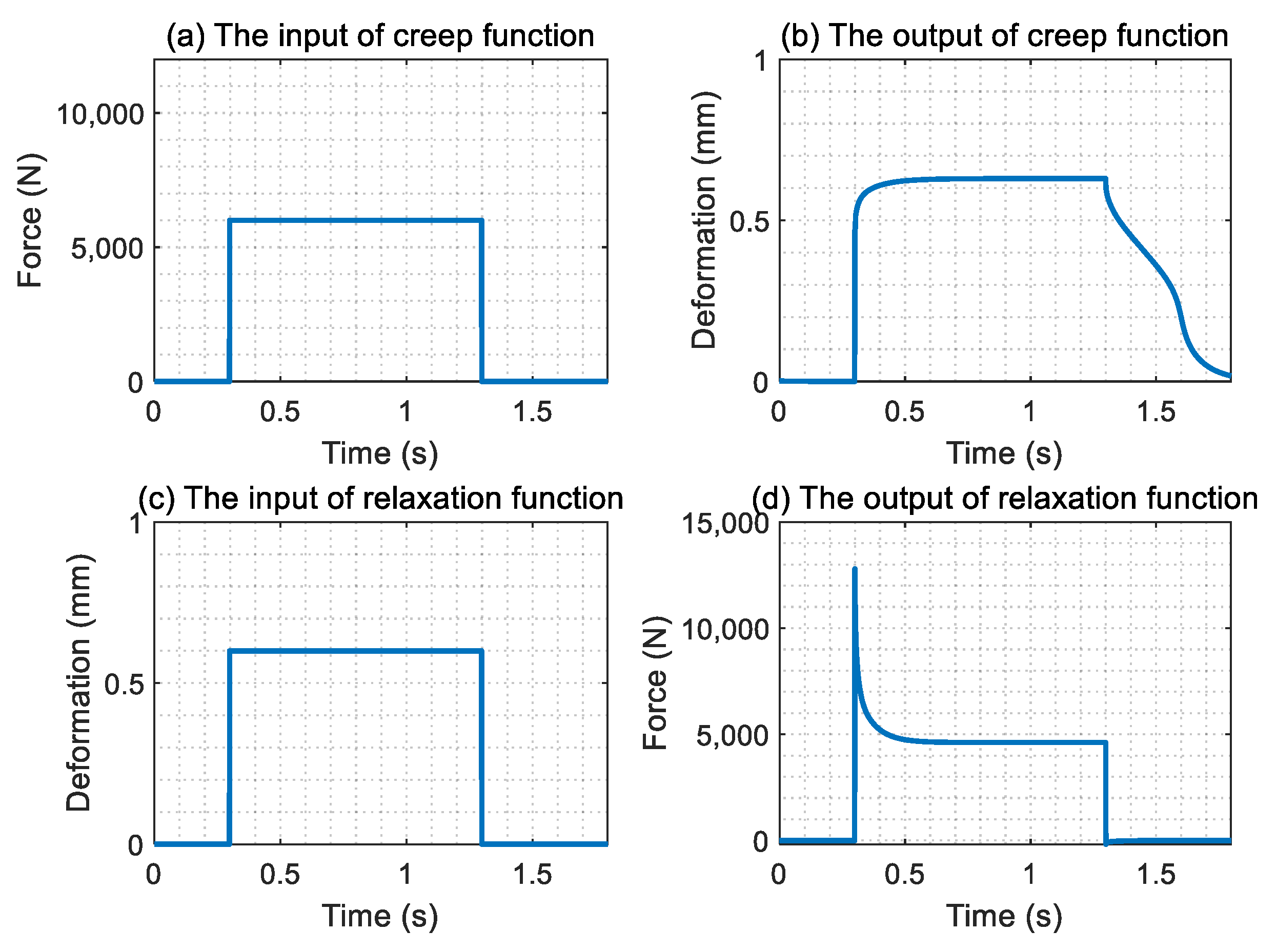
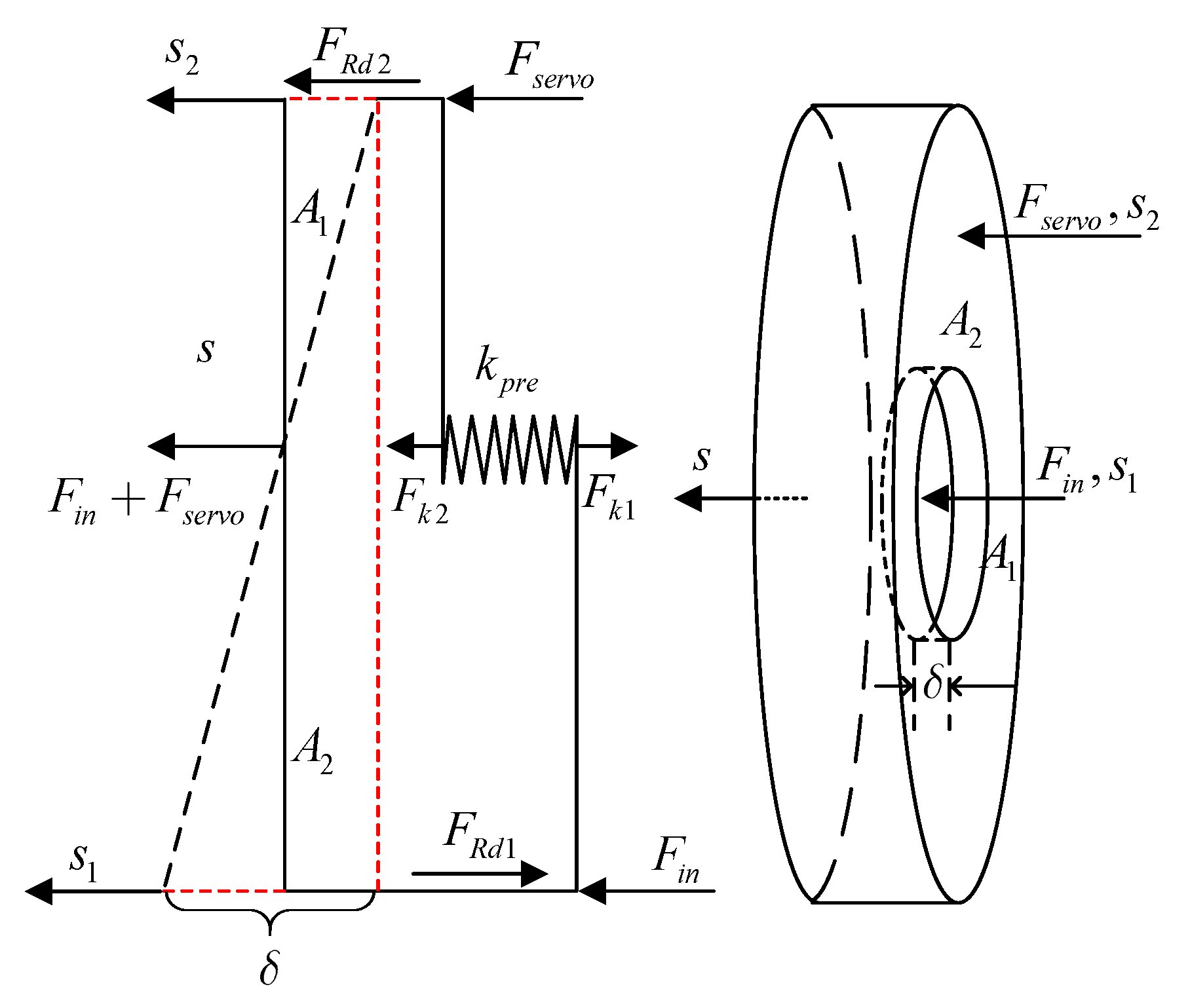

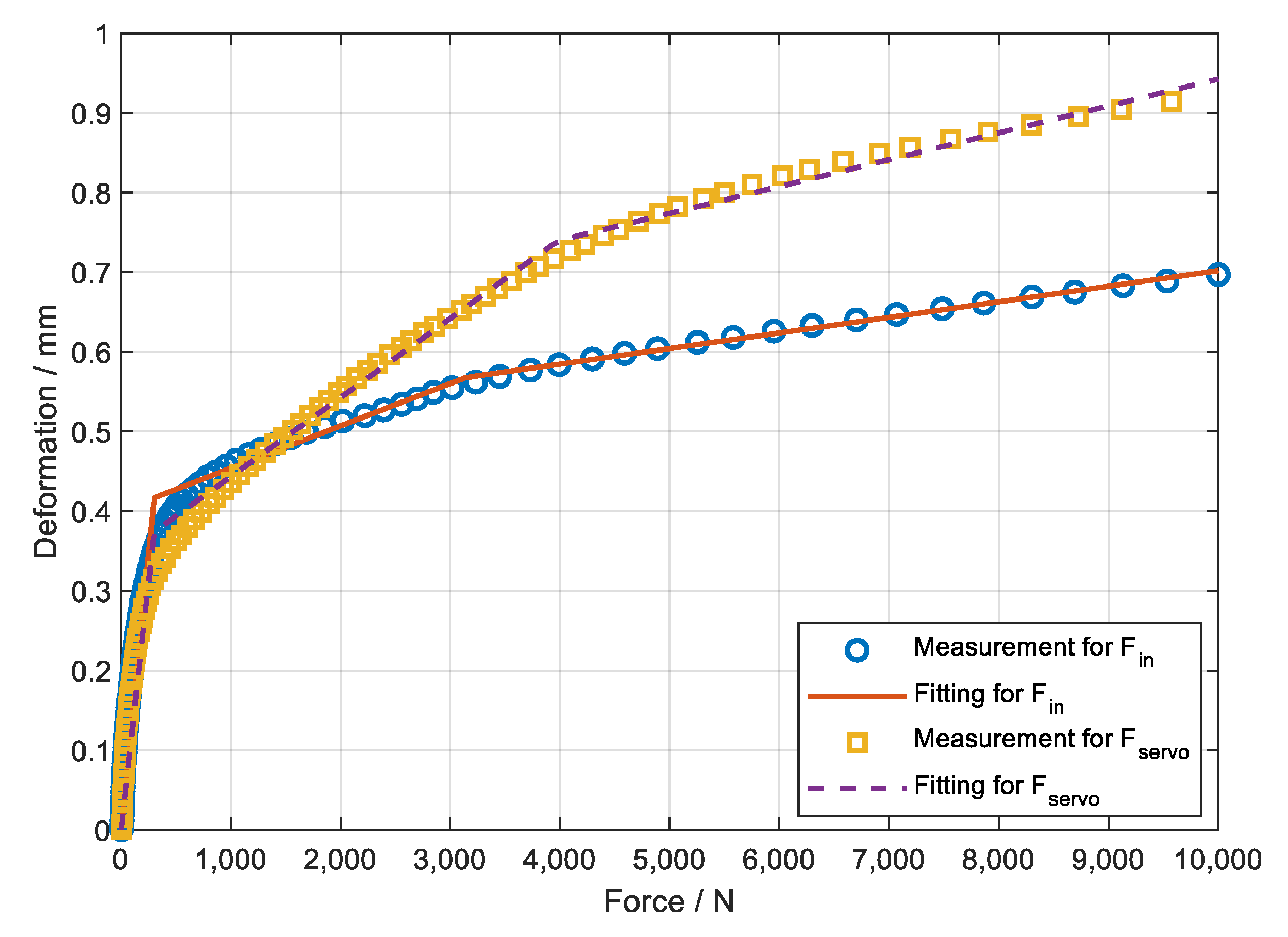
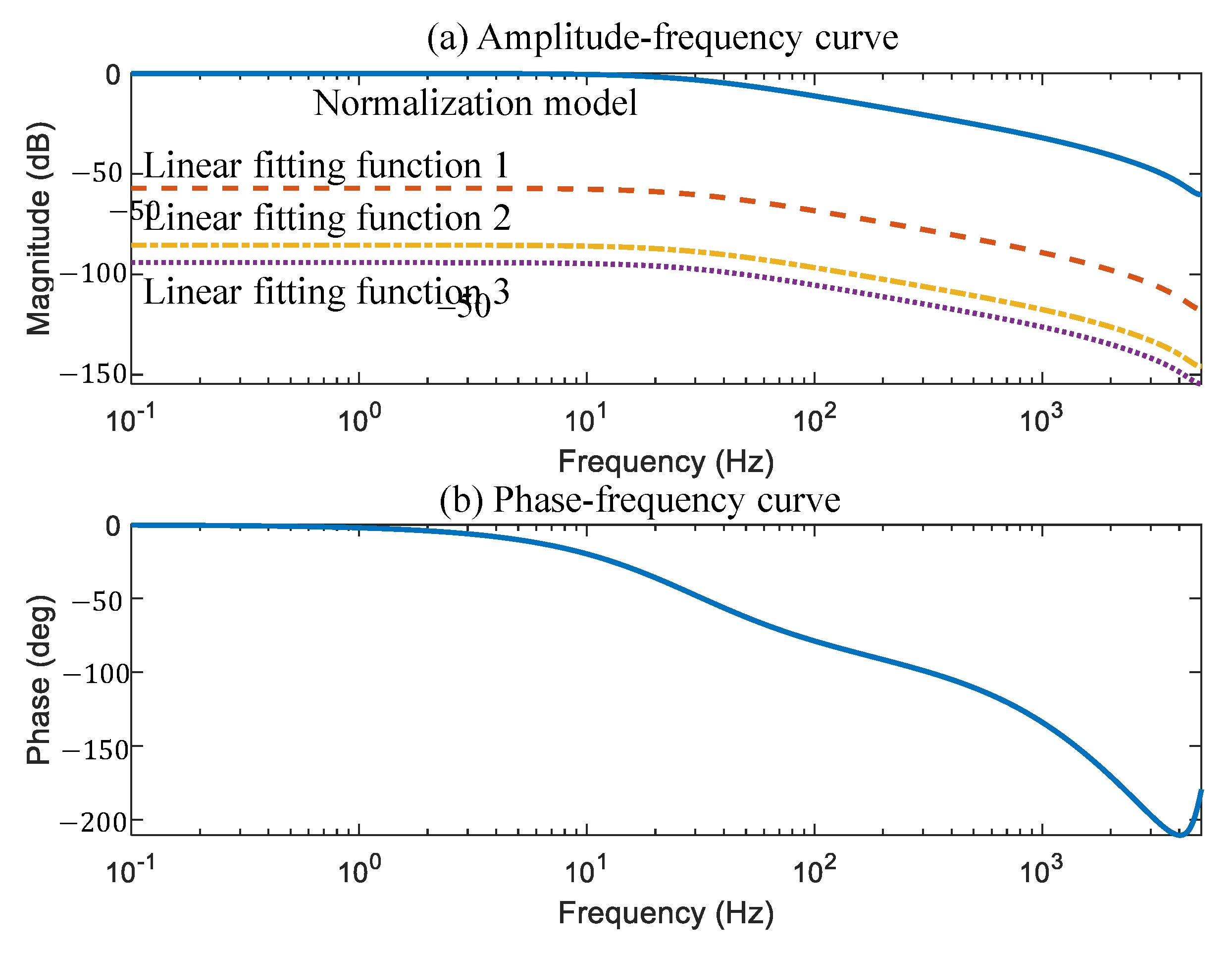
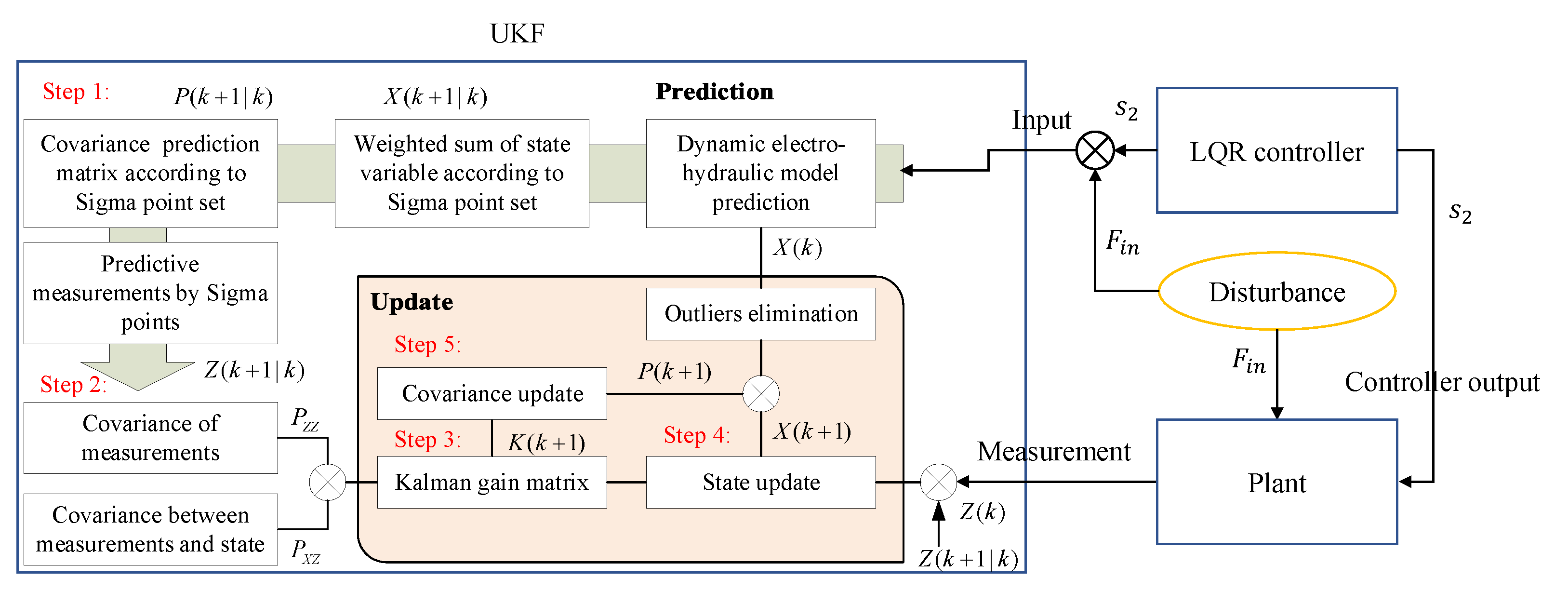

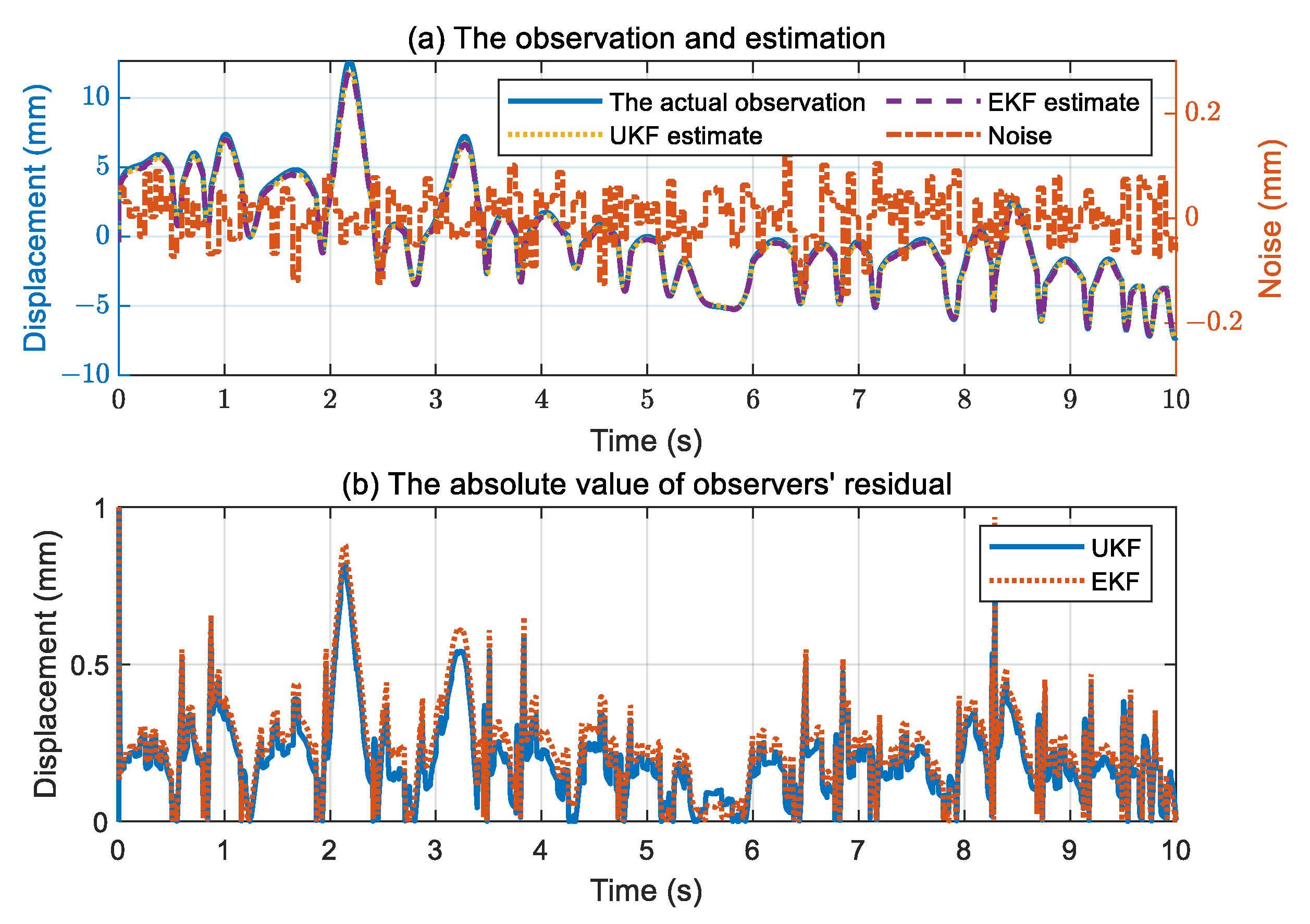

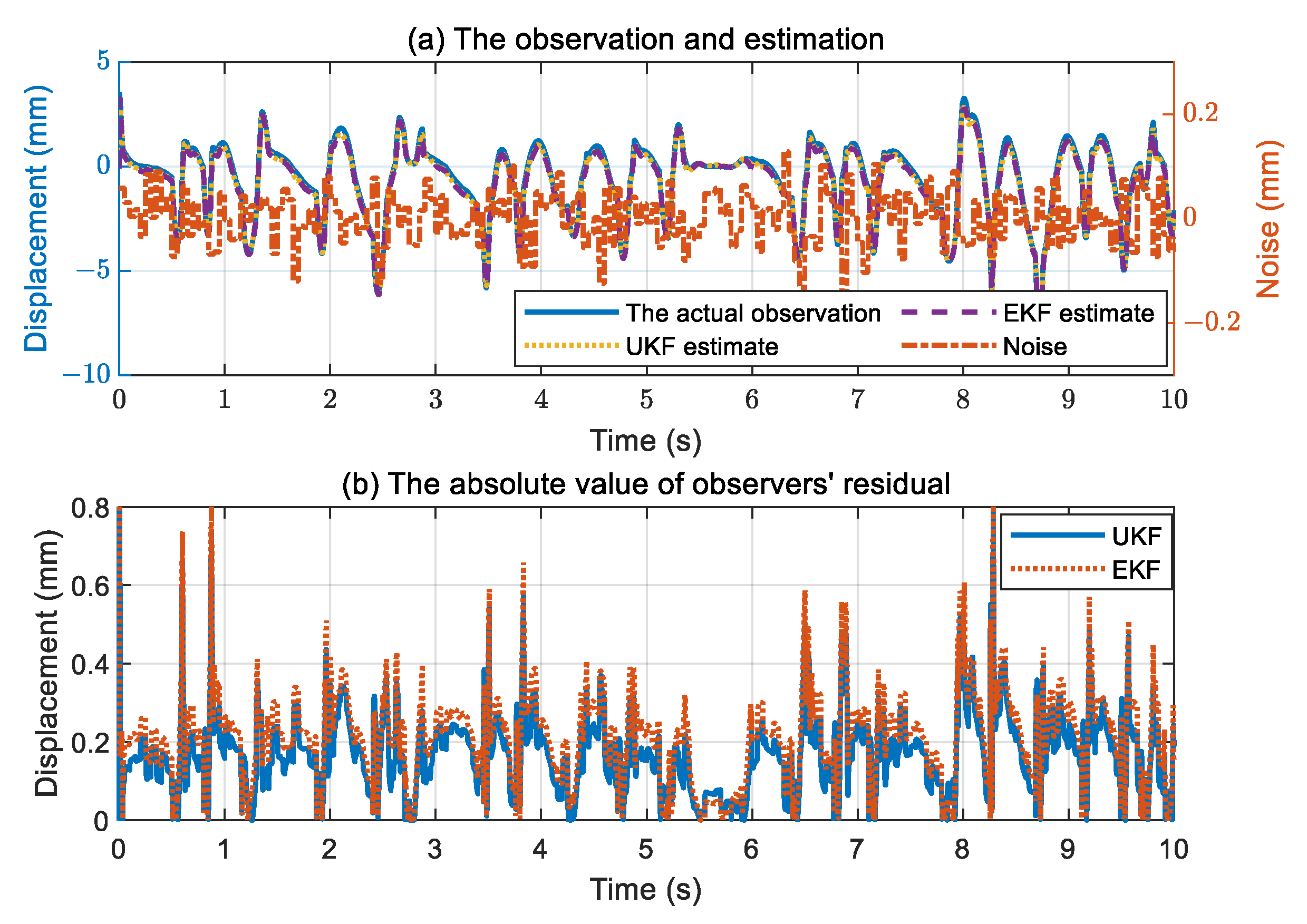
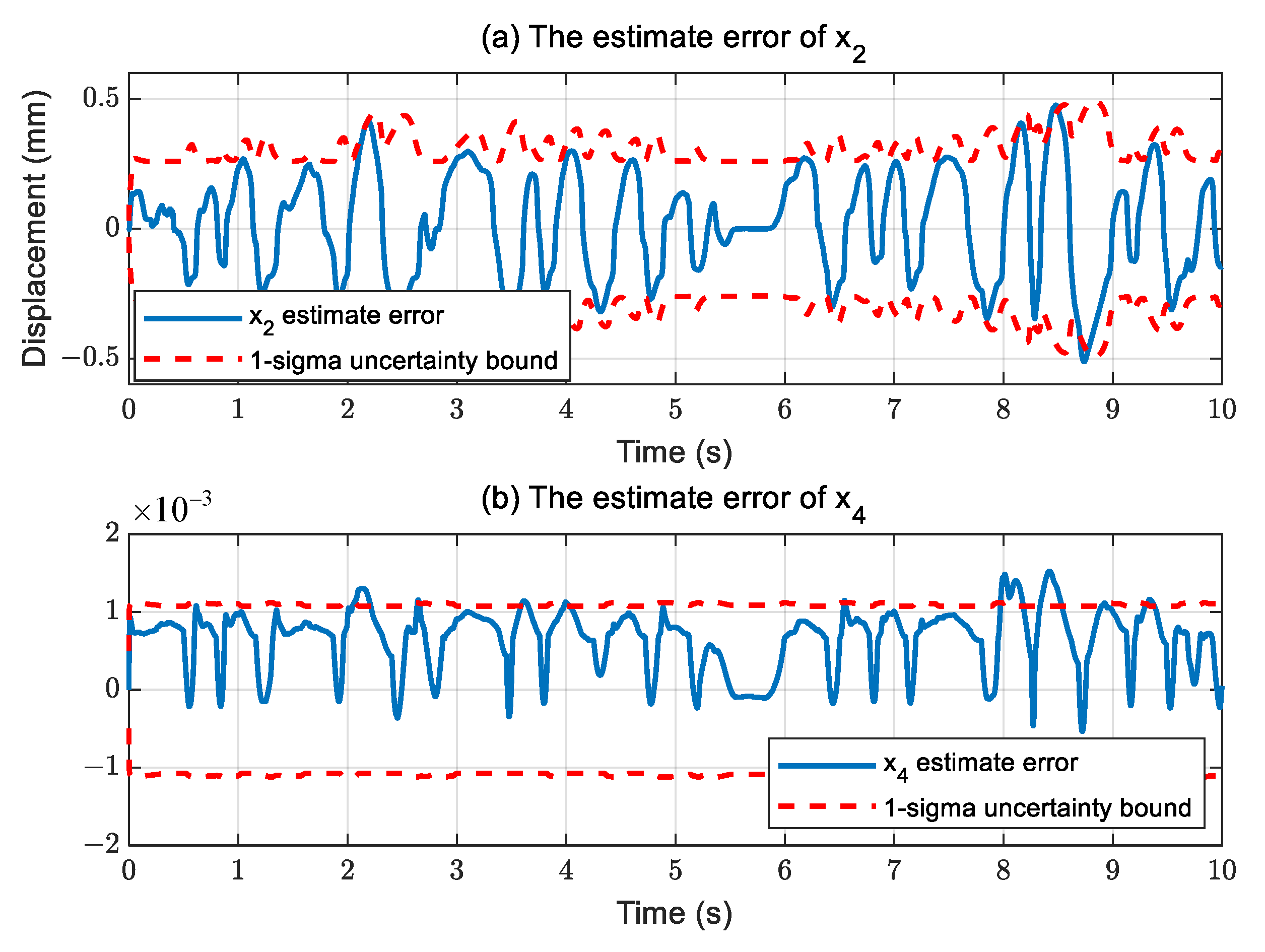



| Case | EKF | EKF | Improvement/% |
|---|---|---|---|
| Open-loop | 0.2758 | 0.2406 | 12.75 |
| Closed-loop | 0.2405 | 0.1999 | 16.87 |
| Vehicle test | 0.0565 | 0.0472 | 16.47 |
Disclaimer/Publisher’s Note: The statements, opinions and data contained in all publications are solely those of the individual author(s) and contributor(s) and not of MDPI and/or the editor(s). MDPI and/or the editor(s) disclaim responsibility for any injury to people or property resulting from any ideas, methods, instructions or products referred to in the content. |
© 2023 by the authors. Licensee MDPI, Basel, Switzerland. This article is an open access article distributed under the terms and conditions of the Creative Commons Attribution (CC BY) license (https://creativecommons.org/licenses/by/4.0/).
Share and Cite
Mei, M.; Cheng, S.; Li, L.; Mu, H.; Pei, Y. UKF-Based Observer Design for the Electric Brake Booster in Situations of Disturbance. Actuators 2023, 12, 94. https://doi.org/10.3390/act12030094
Mei M, Cheng S, Li L, Mu H, Pei Y. UKF-Based Observer Design for the Electric Brake Booster in Situations of Disturbance. Actuators. 2023; 12(3):94. https://doi.org/10.3390/act12030094
Chicago/Turabian StyleMei, Mingming, Shuo Cheng, Liang Li, Hongyuan Mu, and Yuxuan Pei. 2023. "UKF-Based Observer Design for the Electric Brake Booster in Situations of Disturbance" Actuators 12, no. 3: 94. https://doi.org/10.3390/act12030094
APA StyleMei, M., Cheng, S., Li, L., Mu, H., & Pei, Y. (2023). UKF-Based Observer Design for the Electric Brake Booster in Situations of Disturbance. Actuators, 12(3), 94. https://doi.org/10.3390/act12030094







